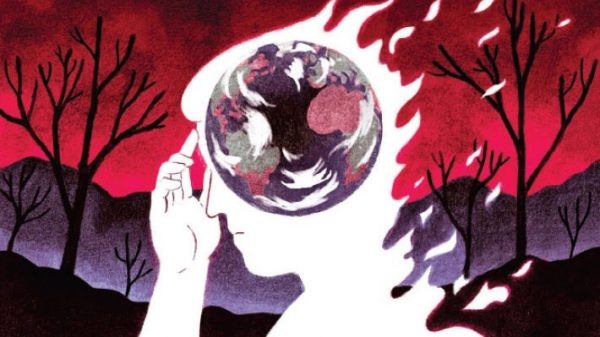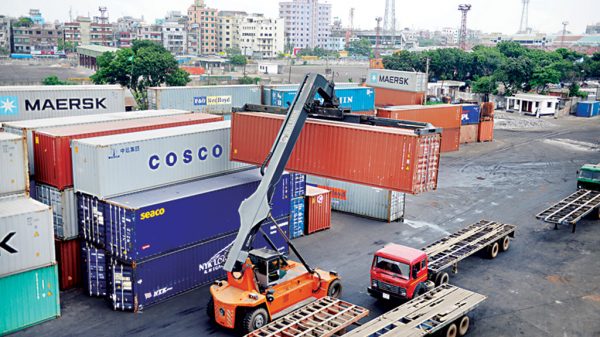Shawdesh Desk:
The current climate crisis, which has been lingering for decades in every region, is not unheard of. Climate change is the defining issue of our time; an extreme issue. Climate change is undoubtedly the root of many other lingering issues, whether economic or social conditions or even the functioning of health systems. Due to all the chaos, a newly discovered psychological burden is known as eco-anxiety. “A chronic fear of environmental doom” is how eco-anxiety is defined by ecoAmerica and the American Psychological Association (APA). Exposure to information about climate change through the news media and other sources, as well as first-hand experience with extreme weather events and environmental change, can all contribute to this fear.
Eco-anxiety can be a huge burden on our minds. Statistics show that eco-anxiety hinders our sleep cycle, furthering insomnia, the most commonly found symptom. Isolation is another common symptom; brainstorming ideas on such a major issue results in the feeling of hopelessness—the feeling of watching your future crumble right in front of your eyes. Our future, which we once saw as bright with hope, has become hard to see because of the possible coming environmental problems.
This makes it harder for us to plan our lives. The mix of what a person feels and broader stories from society and culture makes eco-anxiety worse. Most people see the problems of global warming and accept them due to a lack of hope and determination for change. Often, these discussions make climate change seem very important to human survival. High-burden anxiety mainly comes from an unclear future, both personally and on a large scale.
It is important to spread information about natural problems, but it can also increase worry. Large, eye-catching images and stories give the impression that something dangerous is happening at the moment. This culture of fear spreads out among everyone’s understanding. The news and social media make people see the big problems for nature daily.
They show how things are getting worse in our world very quickly. The quick news rounds on TV and easy sharing of information through sites like Facebook make people aware of how bad environmental problems are every day.
Eco-anxiety is lasting because people who often get scared of information feel like they need to stay awake and learn. This always makes them ready for it. People of all ages have different signs of worry about a messy earth. This comes from the mix between personal events and their society’s situations. Children demonstrate how fear and worry blend. Concerns about the wildlife and extreme weather that now frequent their new territory shape children’s viewpoints. Teenagers face problems regarding their future because they worry about the environment.
By feeling anxious and powerless, they gain the will to take action and change how decisions are made in our world regarding the preservation of the environment. Adults who look after or support other adults in thinking critically about nature consider careers and lifestyle choices. Seniors who have experienced years of environmental change may experience a particular kind of eco-anxiety that is rooted in nostalgia and concerns about their legacy.
Eco-anxiety rises when pollution levels rise because the apparent consequences of environmental deterioration aggravate people’s psychological suffering. Residents in these places often feel worried about the environment because they constantly deal with dirty water sources, bad air quality, and more. A great example would be Bangladesh, which is also vulnerable to climate change.
Frequent floods and cyclones not only cause immediate disruptions to daily life but also permanently alter the landscape. Its citizens experience increased levels of eco-anxiety due to the distressing reality of a changing climate, especially in low-lying and densely populated areas.
The confluence of environmental difficulties, economic vulnerabilities and a densely populated urban environment highlights Bangladesh’s particular dynamics that add to the psychological burden. The global conversation about the psychological costs of residing in a world beset by environmental crises becomes even more complex because of this. Bangladesh’s distinct characteristics, which include a high population density, financial insecurity and environmental issues, all contribute to the complexity of the global discourse surrounding the effects of environmental problems on people’s mental health.
While feeling worried about the environment might be a difficult problem for us to solve, it is not always an end with no way out. It is a sign to act; it reveals that we have to approve of the sadness caused by our world being changed. If we get to know and agree with these feelings, we can build ourselves up. Accepting this and moving on is a good way to restore hope and excitement. Each step we take towards being green, each time we speak up for the environment and put in any attempt to help environmental groups, adds together. It promotes a big change as part of group actions. We need to keep in mind that even with the darkness of changes happening, hope can grow.
























Leave a Reply